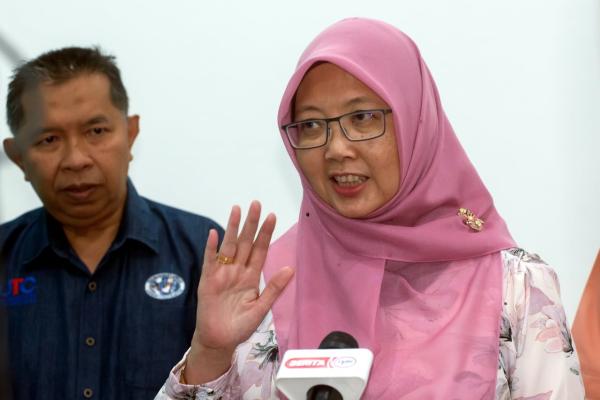KUALA LUMPUR, Nov 21 — All variable message system (VMS) services or LED billboards managed by the Kuala Lumpur City Hall (DBKL) will display real-time weather conditions and warnings of potential flash floods starting tomorrow.
Minister in the Prime Minister’s Department (Federal Territories) Dr Zaliha Mustafa said the early warning initiative aims to ensure the city dwellers can prepare ahead of time in the event of such disasters.
“For this initiative, we are collaborating with MetMalaysia and DID (Irrigation and Drainage Department) starting with the LED billboard at Menara DBKL,” she said during Ministers’ Question Time at the Dewan Rakyat sitting today.
Dr Zaliha said this in reply to Teresa Kok (PH-Seputeh) about DBKL’s measures to prevent and address flash floods in Kuala Lumpur, and the list of development projects approved by DBKL in areas surrounding flood retention ponds since 2014.
She said DBKL has established the Kuala Lumpur Public Incident Management Committee in collaboration with several other agencies to provide immediate assistance within 30 minutes of receiving early flood warnings or reports of flash floods in the city.
The agencies involved include the Civil Defence Force, the Royal Malaysia Police, the Fire and Rescue Department, and the Kuala Lumpur DID.
In another development, Dr Zaliha clarified the sinkhole incident at Jalan Masjid India on August 23 was not directly linked to flash floods in the city.
However, she said as a preventive measure against sinkholes in Kuala Lumpur, DBKL is conducting soil structure studies, monitored by a special task force since the incident, and the study is now in its final stages.
“For short-term measures, DBKL and the relevant agencies are auditing the integrity of utility assets, as well as conducting underground mapping and integrity testing in the Central Business District area of Kuala Lumpur.
“In addition, soil investigation works to determine the structure of soil layers using methods such as Ground Penetrating Radar and Mackintosh Probe, as well as geophysical tests, like microgravity to detect underground voids, and ground settlement monitoring to track soil movement, are also being carried out,” she said.
For long-term measures, Dr Zaliha said DBKL will conduct soil investigations using the deep boring (bore hole) technique, accompanied by laboratory tests and geotechnical reports prepared by certified civil engineers for high-risk development areas.
— Bernama




